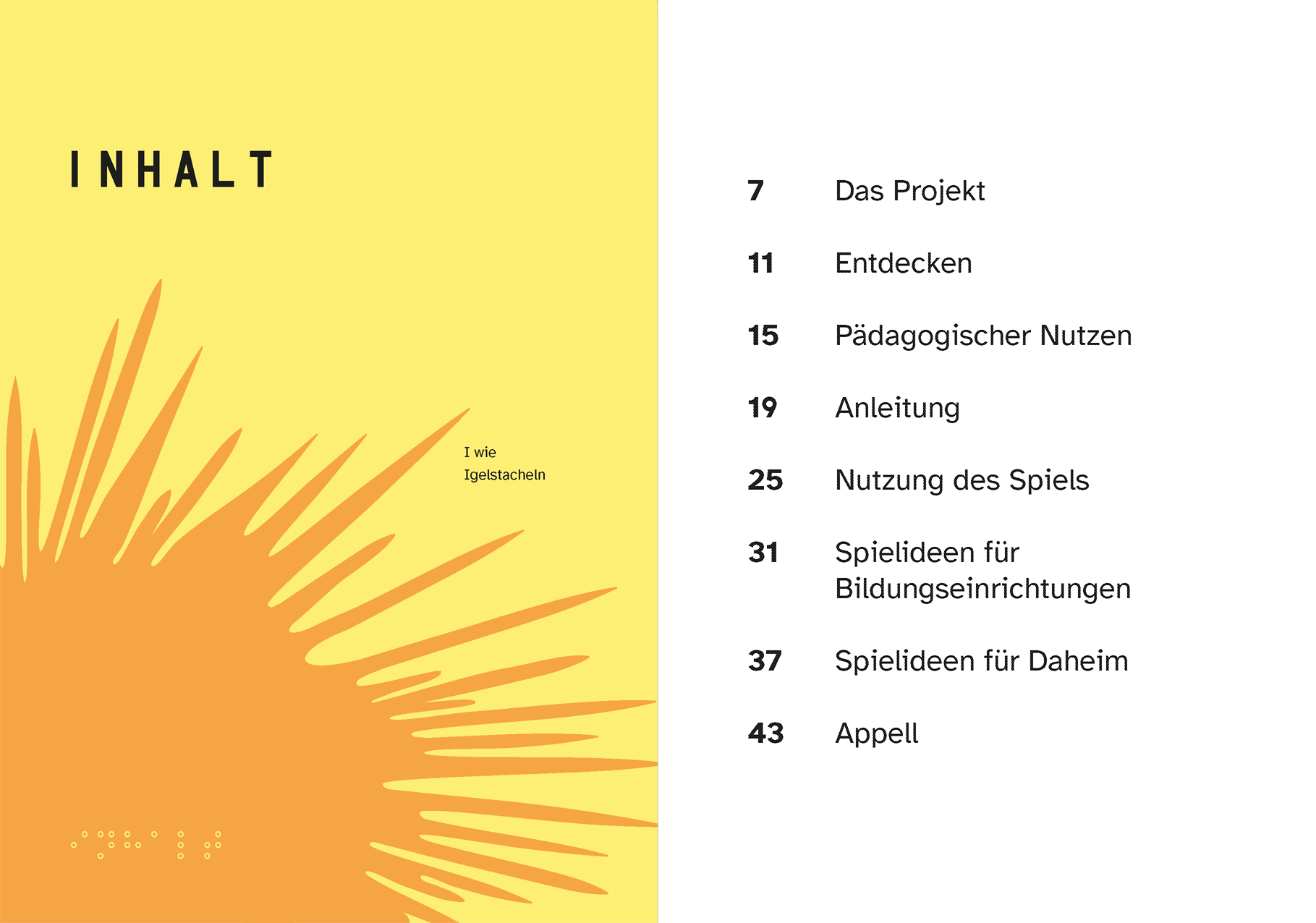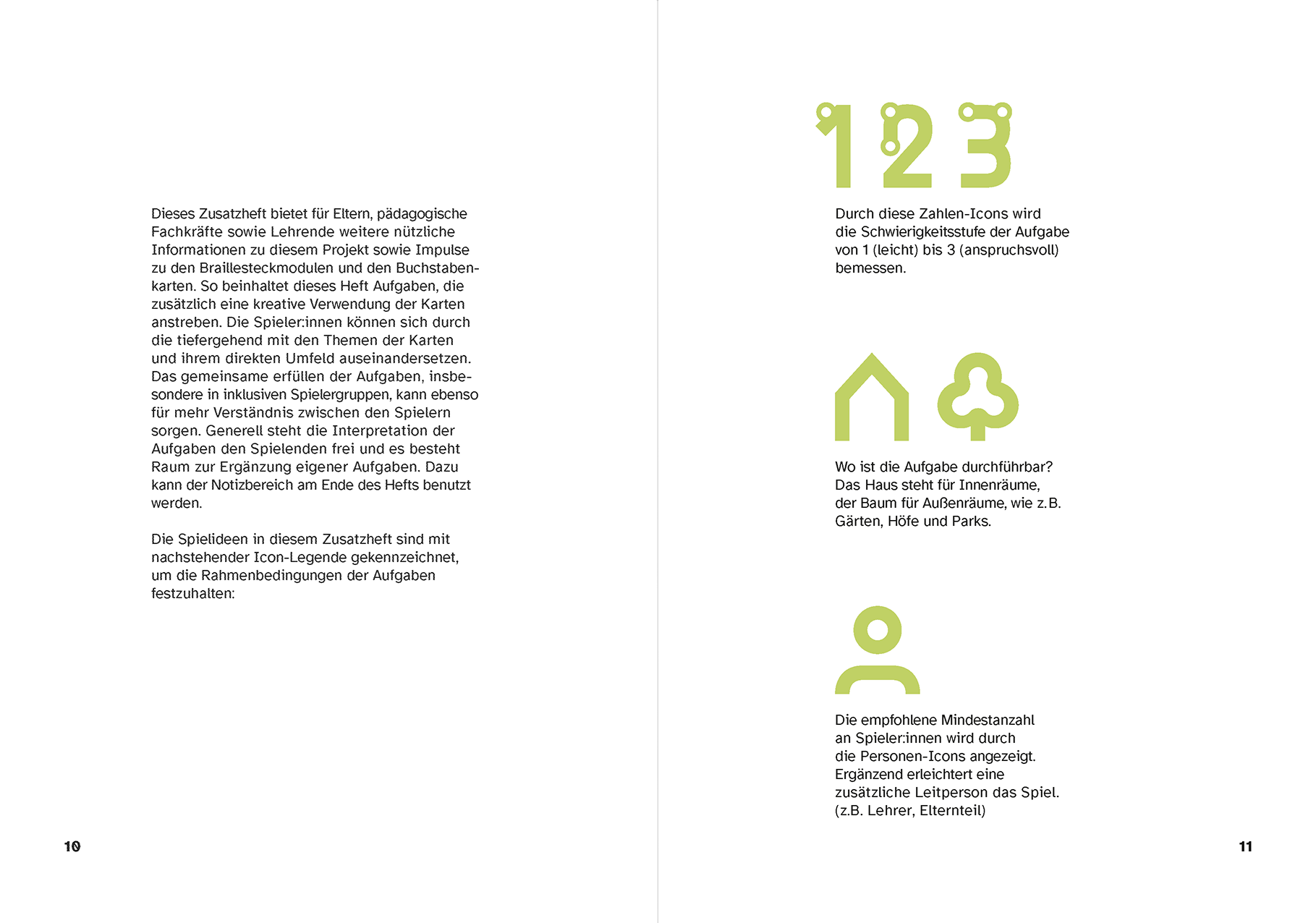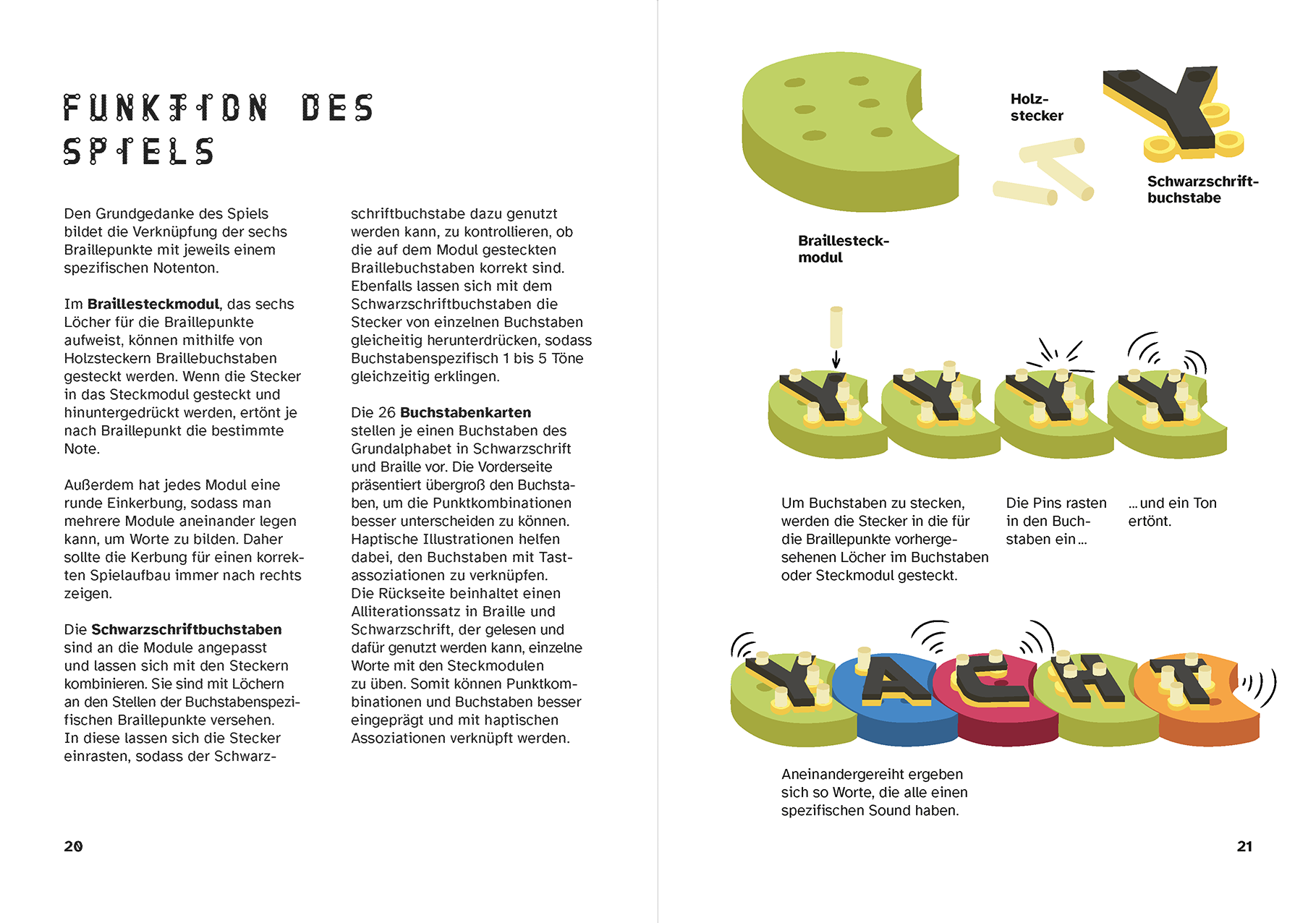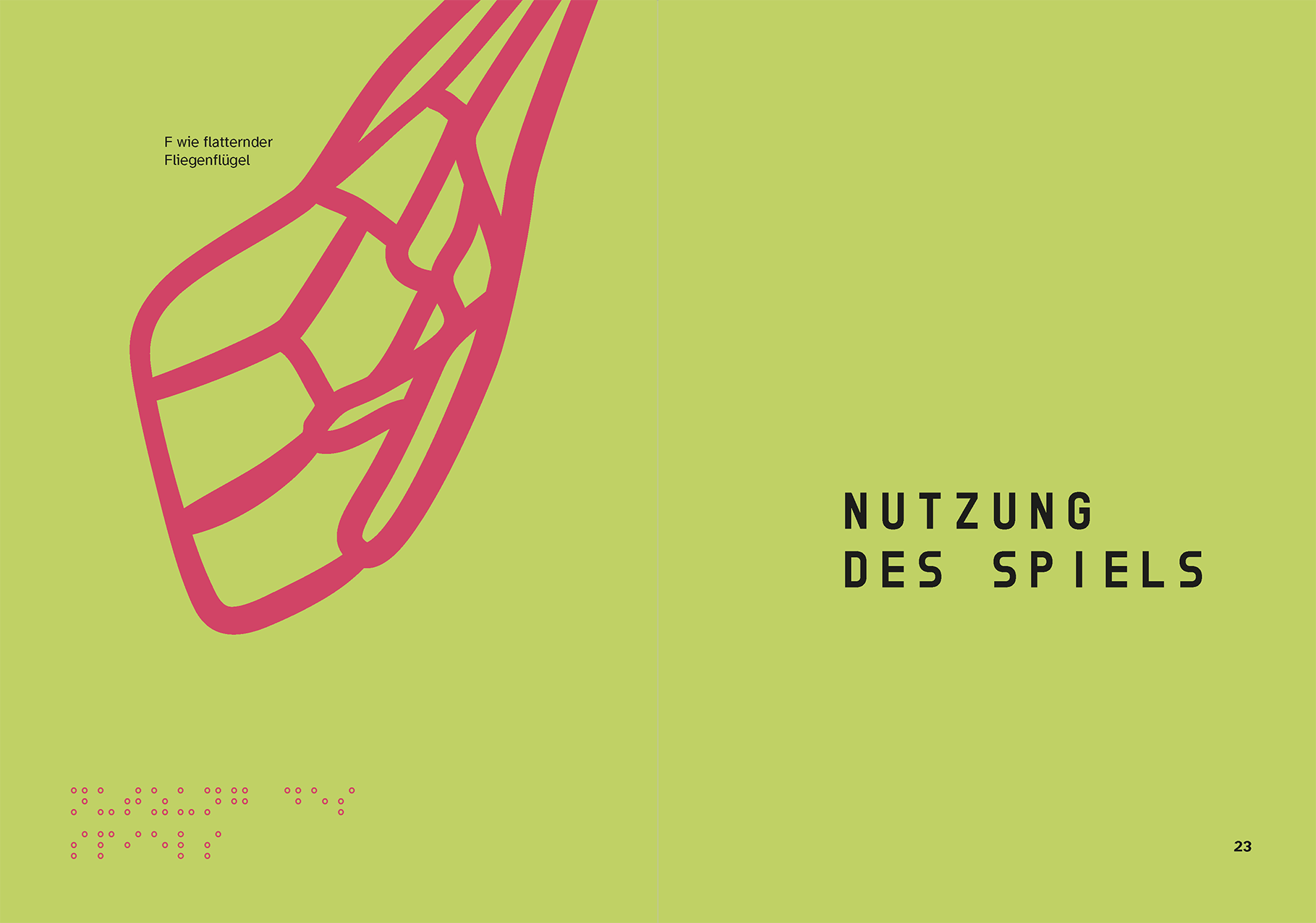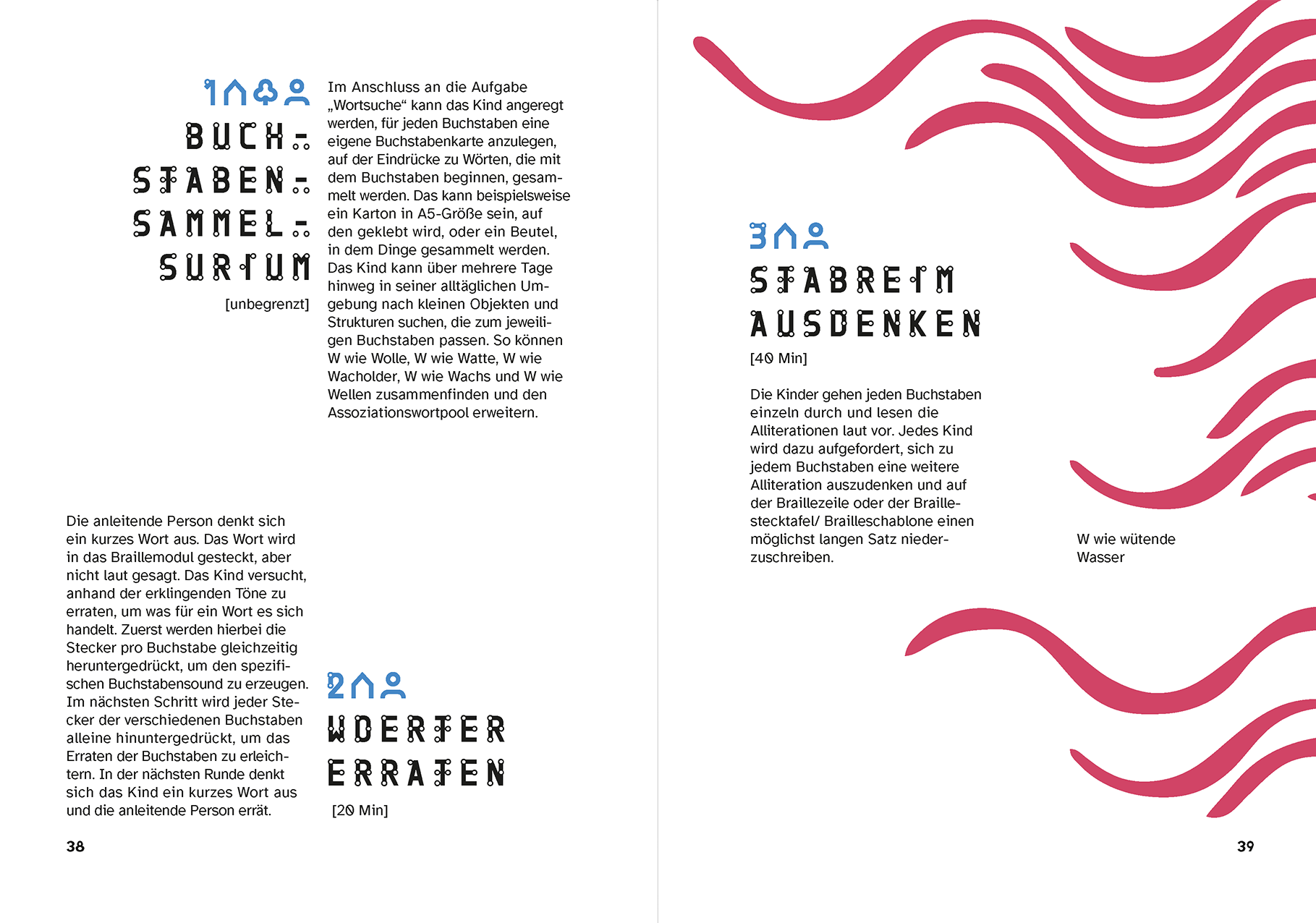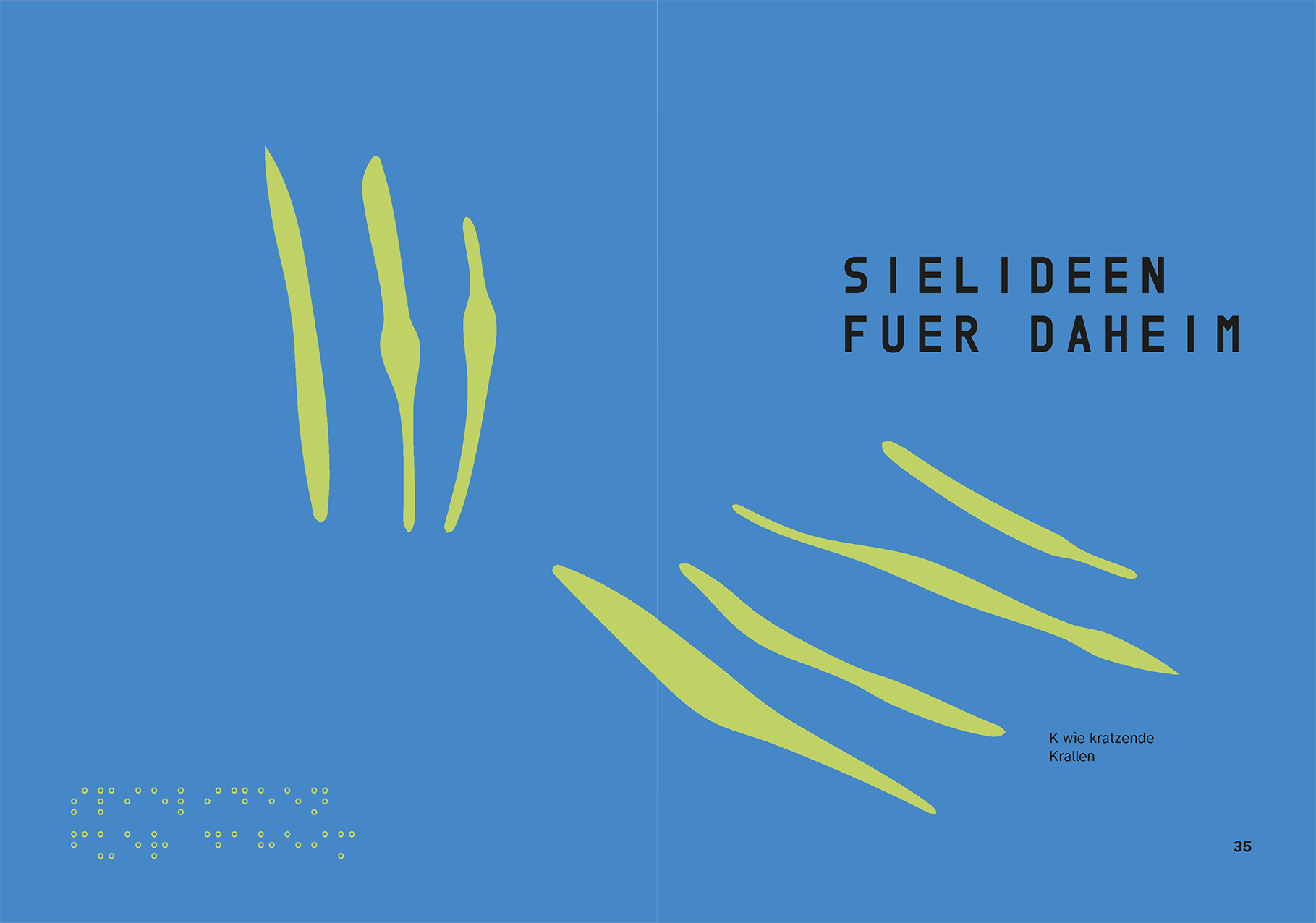Klangpunkt
Playfully discovering Braille
February 2023
with Stamatia Galanis
Concept, Editorial, Prototyping,
Typedesign and Illustration
Bachelor project
→ Thinking
→ Braille pin modules
→ Letter cards
→ Wooden letters
→ Playbook
→ Digital
→ & more
Thinking
"Klangpunkt" is not a game in the traditional sense – there is no goal, and no one can win. There is no single way to play it, and the instructions are open to individual interpretation. Instead, it's about discovering, exploring, and fostering enthusiasm for writing. However, not only can a blind child playfully explore their writing system, but sighted classmates are also introduced to standard print while simultaneously becoming aware of the other writing system, Braille. The game consists of several components, which will be explained below.
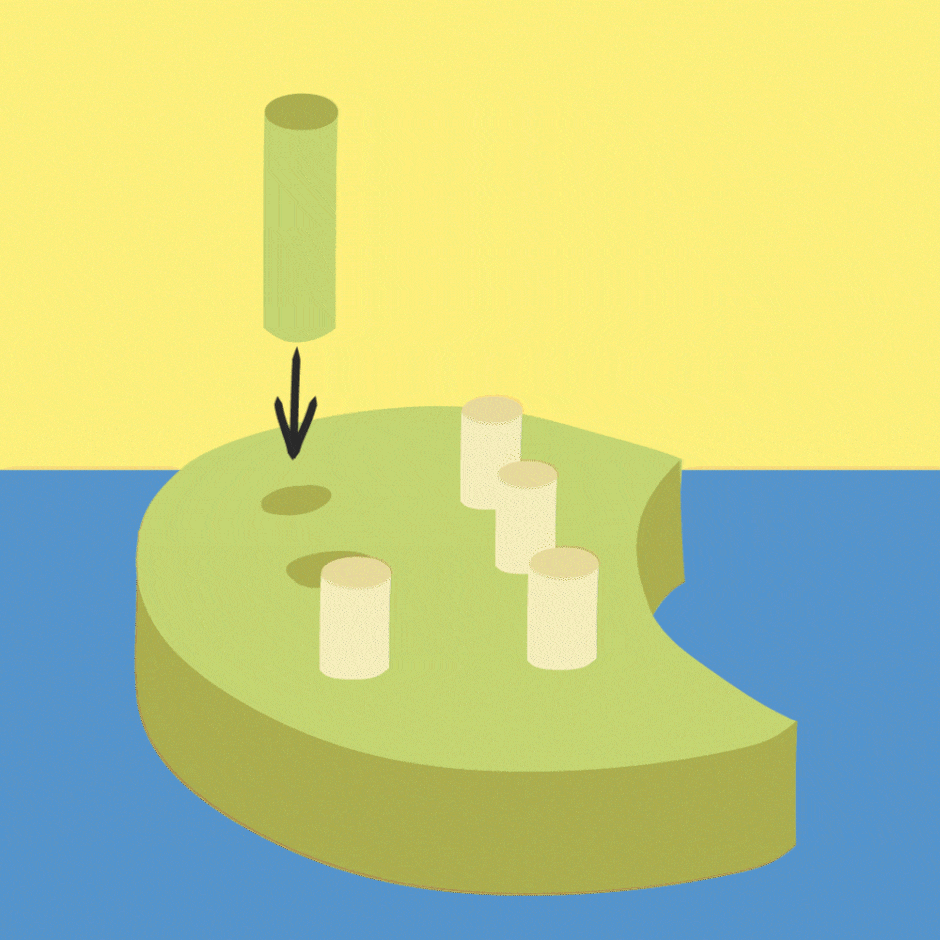
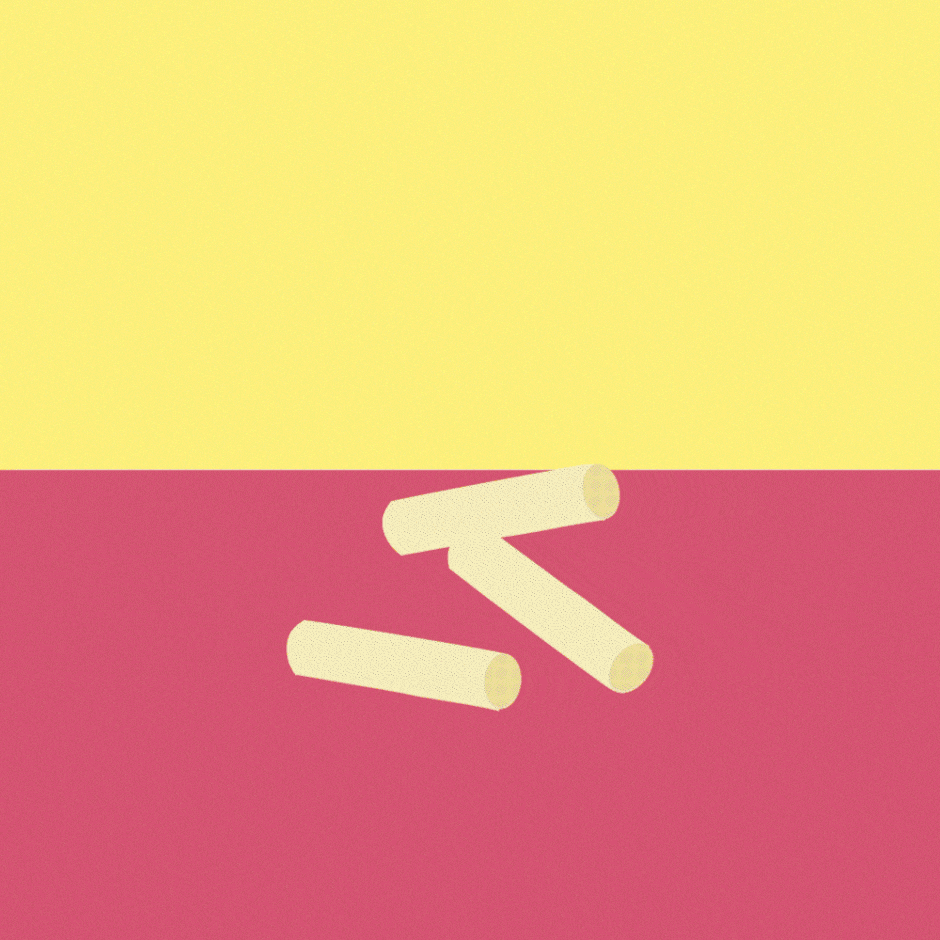
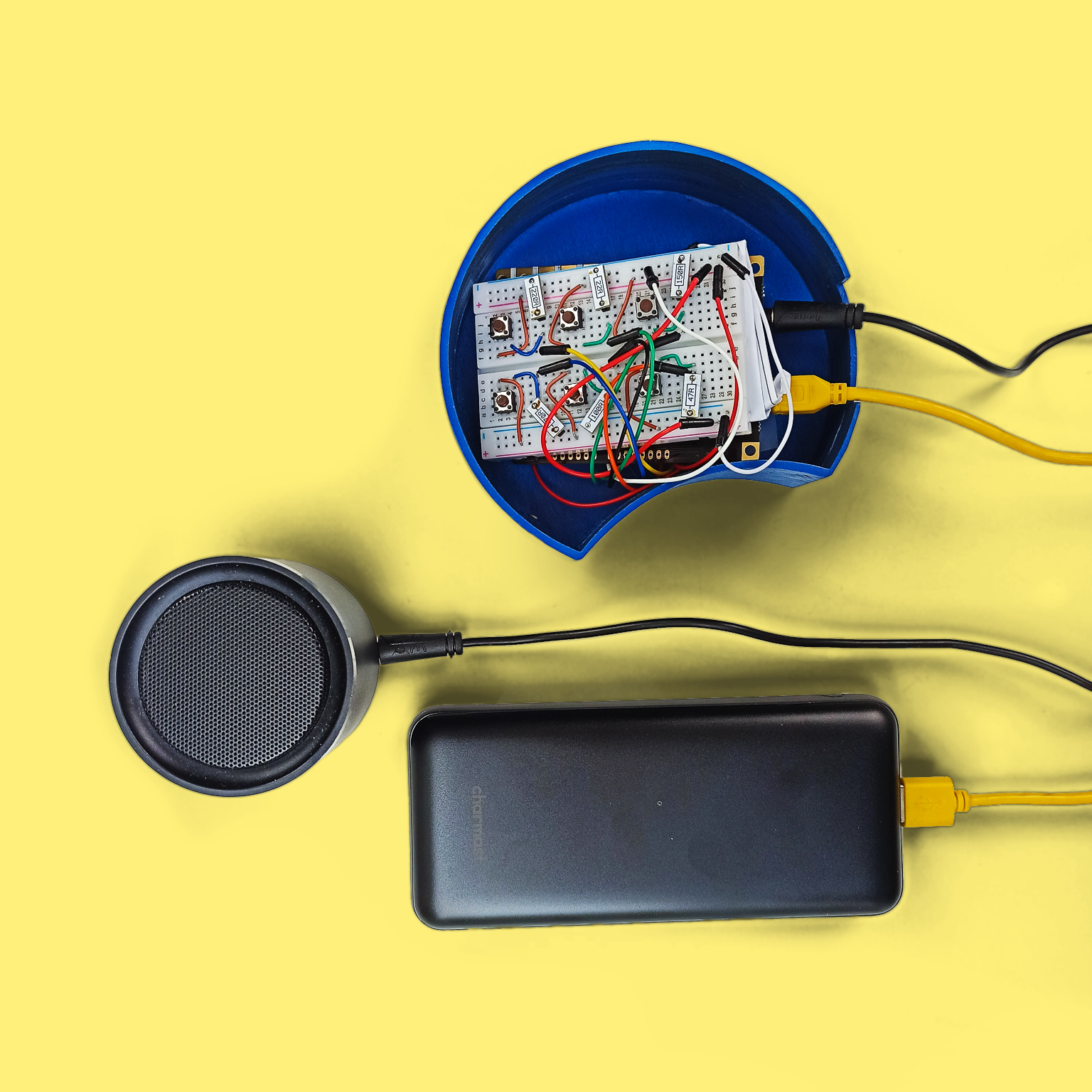
Braille pin modules
The Braille pin modules are moon-shaped wooden boxes with six holes
for the Braille dots and offer a great deal of flexibility and
freedom.
Inserting the pins also provides auditory feedback: each Braille dot
is encoded with a specific piano note. This gives each letter a unique
sound; one single name makes a whole melody.
The Braille module comes with wooden pins and matching Latin wooden
letters. They help blind children to control Braille letters in the
module and to explore and understand the writing of sighted people.
Letter cards
The next components of the game consist of 26 letter cards, each presenting a letter of the alphabet. The front sides of the cards feature simple, tactile illustrations. The two contrasting colors on each card are distinguishable even for color-blind individuals. Additionally, large standard print letters with tangible Braille dots are applied to the cards. This allows sighted children to notice the connection between Braille dots and standard print for the first time.
On the back of the cards, alliterative sentences can be read in both writing systems, with standardized Braille. The alliterations include as many words as possible starting with the respective letter, facilitating the connection between illustration, letter, and sentence. There is an additional instruction card that explains, in a child-friendly manner, how to use the Braille plug modules.

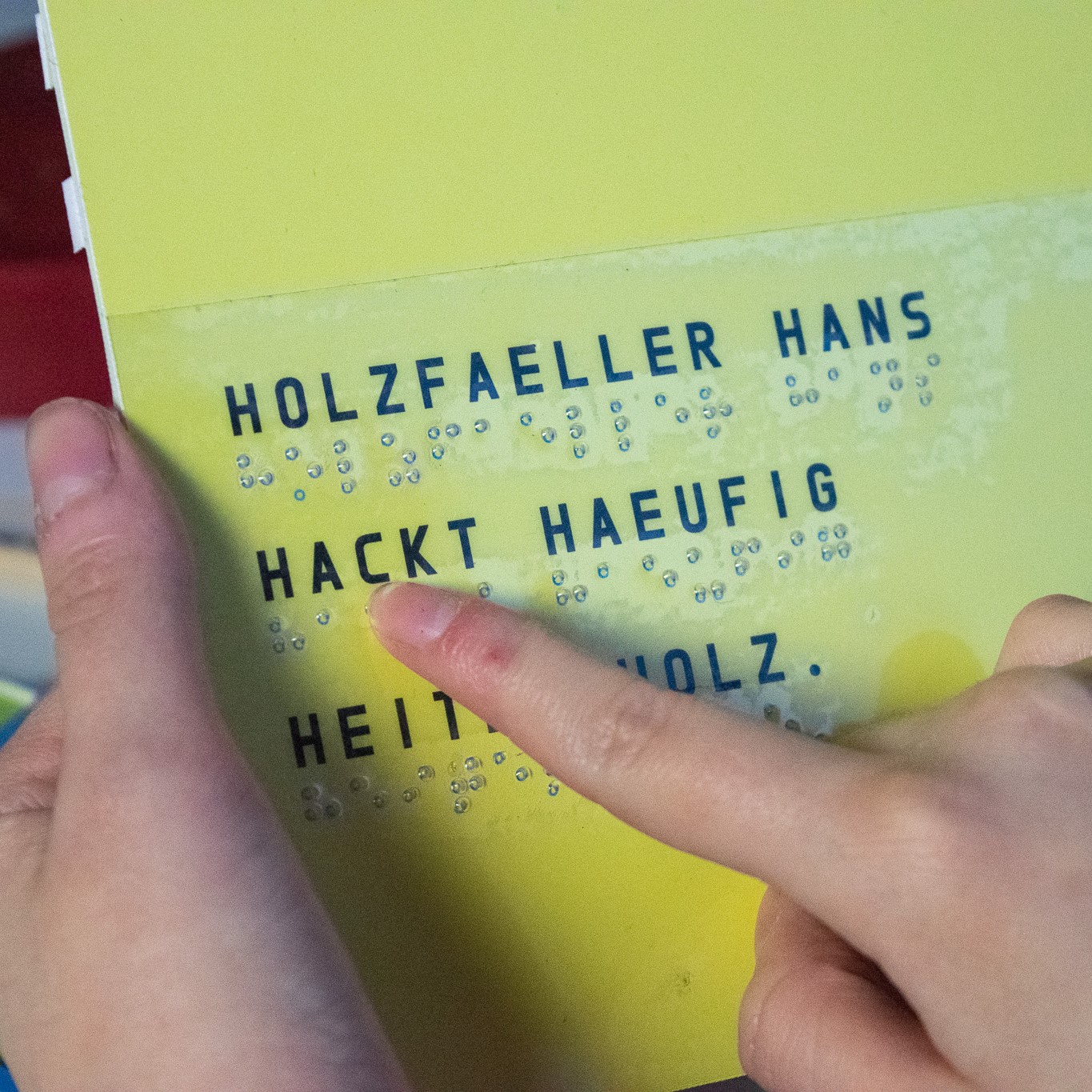
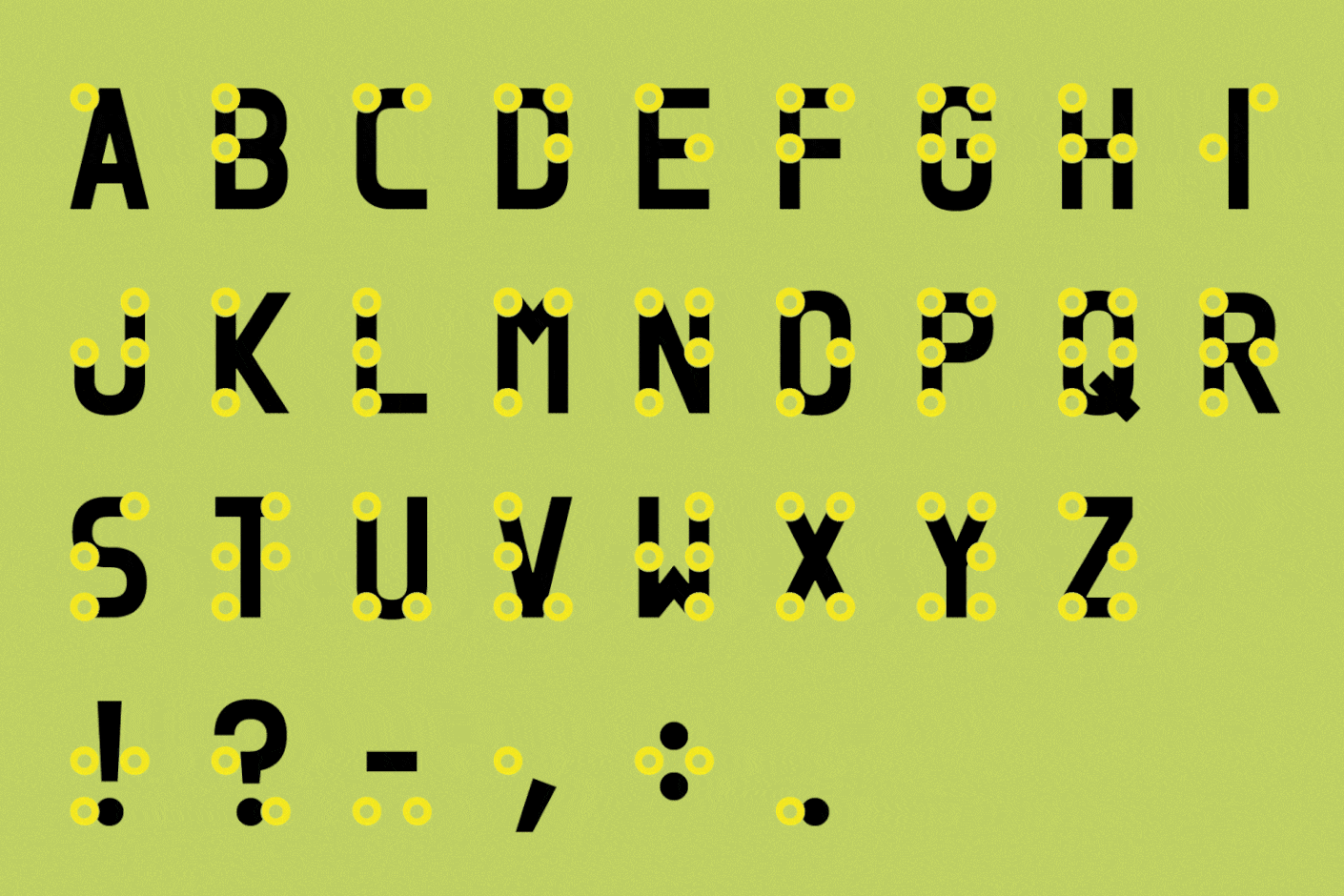
Wooden letters
We developed a typeface for the wooden letters that combines Braille and standard print. It creates a bridge between both writing systems, promoting communication and understanding. Sighted and congenitally blind children learn that more than one writing system exists. The circles of the Braille can be colored. When the font is printed in standard size, it can be embossed with a Braille typewriter, allowing blind and sighted people to read the same document. This helps late-blind children recognize the connection between writing systems and remember the dot combinations more easily.

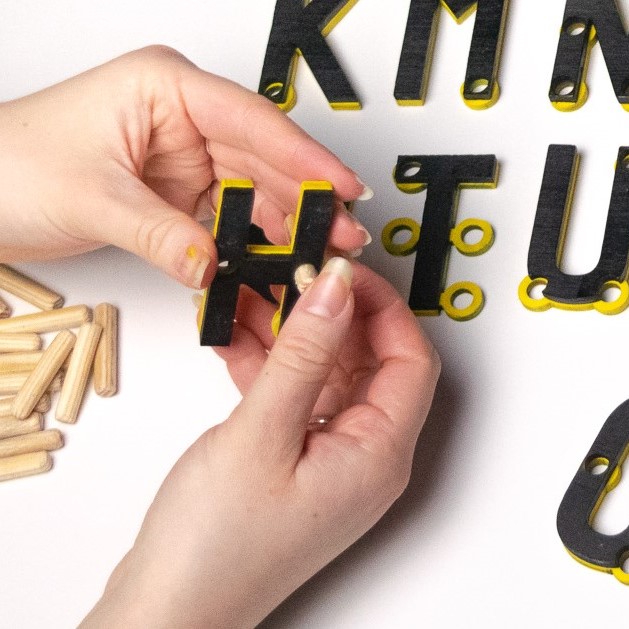


Playbook
The accompanying booklet serves as a guide and inspiration for parents and teachers on how to handle the learning materials and the various possibilities for use at home and in educational settings. The booklet includes sample tasks on how the modules, cards, and letters can be utilized. Other tasks intentionally encourage children to involve their surroundings and not only engage with the materials themselves.


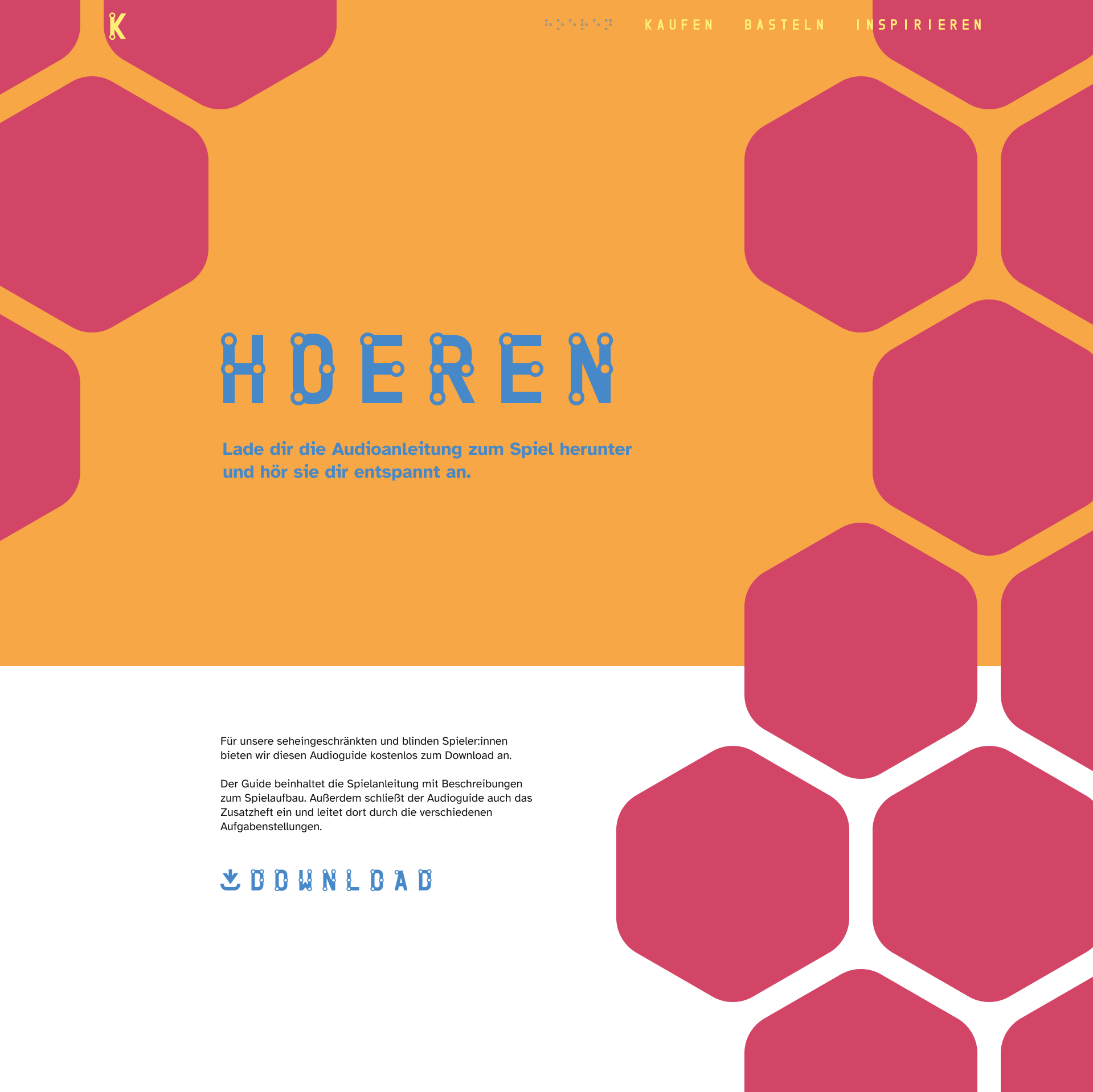
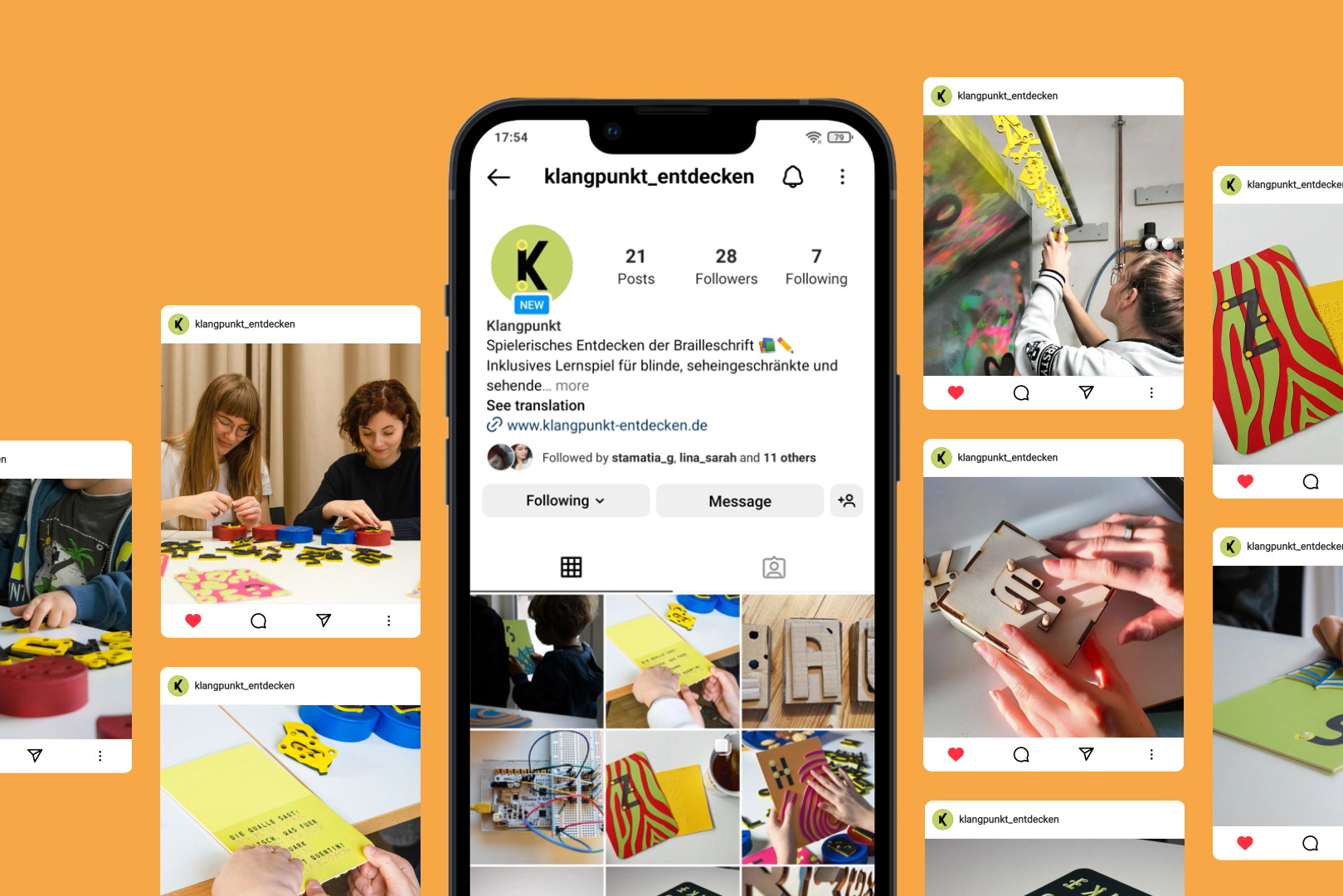
Digital
The website serves as an information portal for the project,
introducing the game components and directing users to a fictional
shop for purchasing. Additionally, elements of the game, along with
open-source materials and an audio guide, are available for download.
DIY instructions for recreating the cards and modules can also be
found on the website. Currently, it is not publicly accessible,
existing only as a Figma prototype.
The project has an Instagram account where photos, impressions, ideas
from players, and behind-the-scenes images are shared with users.
Emphasis is placed on creating an approachable, personal atmosphere,
fostering a community around parents and teachers of blind children
through the account..
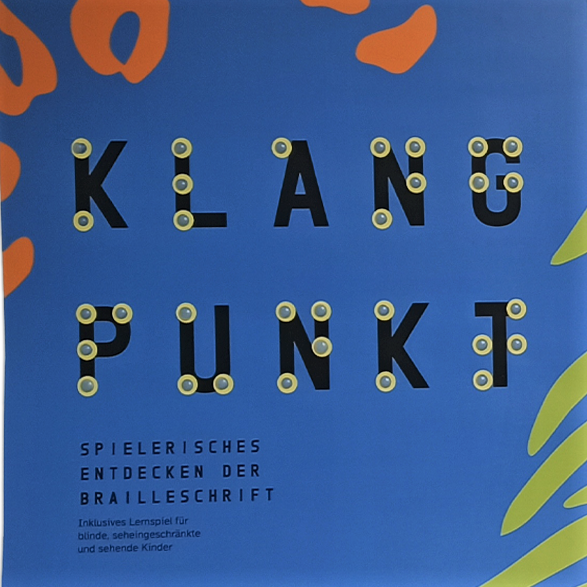


& more
Furthermore, ABC posters were designed for classrooms and children's rooms, featuring oversized letters that are tactile. The ABC postcards, distributable to students in classes, also include a tactile Braille alphabet in German standard size.

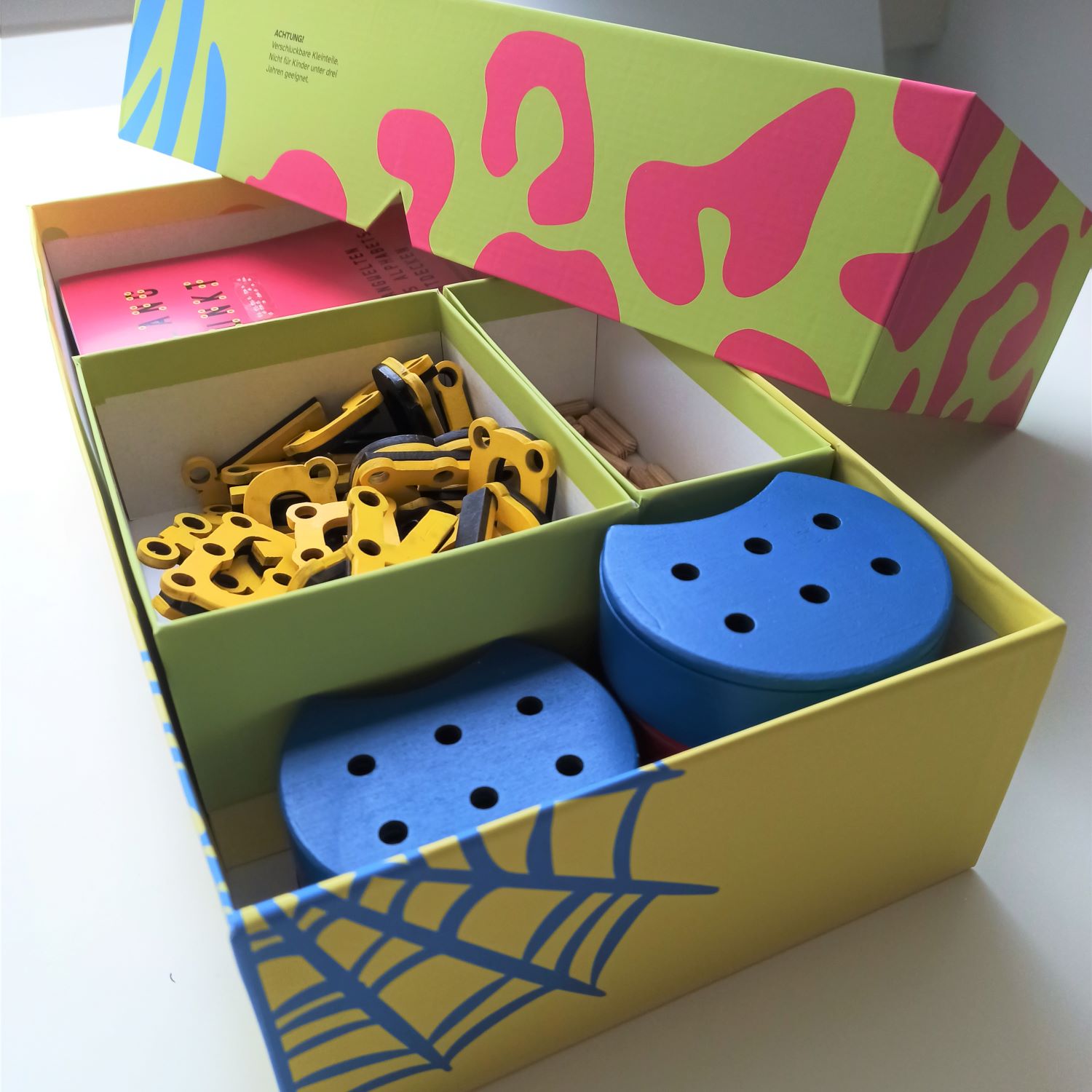
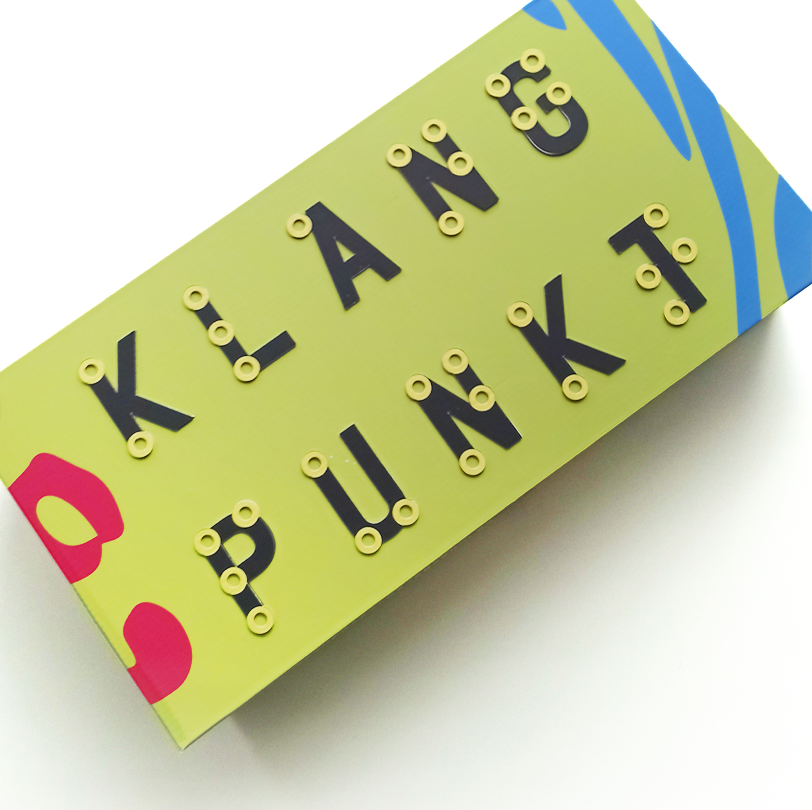
All the materials fit into the Klangpunkt box. It features a tactile
logo on the lid, and essential information is also available in Braille
on the box.
Within the packaging, the letter cards are separated from the Braille
modules by removable boxes. The letters and pins can be sorted into
these boxes. The removable aspect is crucial as blind children can
better orient themselves when everything has a designated place.
Wer war was?
Stamatia Galanis
Braille modules (Implementation)
Letter cards (Design and Implementation)
Wooden letters (Implementation)
Website (Design and Implementation)
Social Media
ABC poster (Design)
Antonia Götz
Braille modules (Design, Coding, Technology, and Implementation)
Letter cards (Design and Implementation)
Font design
Wooden letters (Implementation)
Accompanying booklet (Design)
Packaging (Design)
Logo posters (Design)
Postcards (Design)
